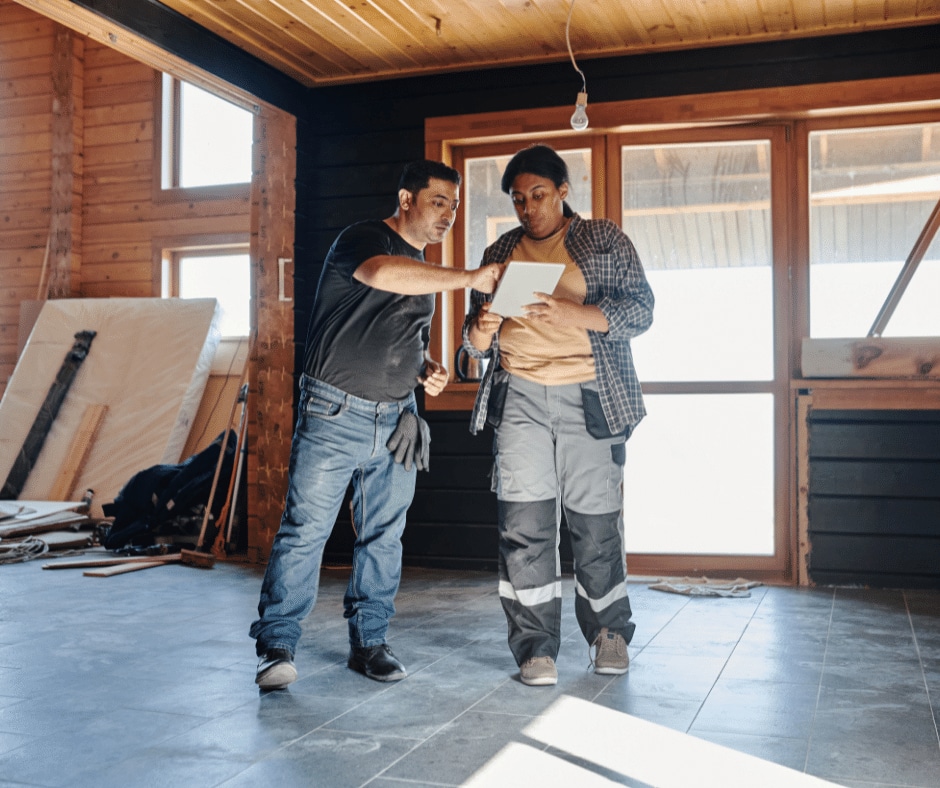Whether you need additional living space or want to utilize what you already have, converting an attic into a living space is a great idea. For most homes, available usable space is sparse. Getting additional living space is usually an expensive and impossible mission. In those situations, converting an attic into a living space is the best idea. However, renovating your attic can be an ambitious venture. To prepare for possible problems, you should consult with an architect. This article will discuss tips for converting an attic into a living space.
Before you start
When thinking about converting an attic, you should be aware of potential obstacles. Before you start, familiarizing yourself with the roofing terminology is always a good idea. Understanding decking, ridge, saddle, valley, and similar terms will help you comprehend architectural language. Your home structure can be your biggest enemy in this venture. It would help if you also explored building codes for the legal requirements. The research can be long and exhausting if you are not familiar with the construction and building codes. Consulting an expert will speed up things and save you time and nerves.
The Rule of Sevens
The rule of seven is designed to help you check if your space meets the necessary criteria. Building codes demand a minimum of 70 square feet. Access standards define width and height minimum as seven by seven feet. If all of the above demands are met, your attic is ready for converting. Certainly, you should check the state of your roof before starting any attic conversion. Additionally, you should have a place to install insulation and ventilation. If your attic doesn’t meet the criteria, there is always a more expensive option – the total roof reconstruction.
Secure a building permit
When you have checked the rule of seven, getting a building permit is the next thing you need. If you are thinking of doing the work discreetly without a permit, we would strongly advise that you don’t do it. Works performed without a building permit may haunt you later, and the fines for unsanctioned work can be costly.
Plan the stairs
Finding enough space for stairs can be tricky. That is why it’s better to plan adequate space for stairs before starting work on your attic. You must meet minimums for head clearance and rise and run calculations. Above all, you must achieve safe access to the attic during regular entry or emergencies.
Selecting a contractor for converting your attic
Converting an attic into a living space can be a fun family project, or it can turn out to be a very challenging experience. While it can be fun, doing it yourself can be life-threatening and dangerous. The safety and stability of your home and family must come first. For this reason, you should always choose an experienced contractor. As the roof is an integral part of the house, it is much better if professionals handle it. A good contractor will be able to determine if your attic floor needs additional support and will indicate any potential issues.
Budget planning for converting an attic into a living space
Whenever you plan to do some home renovation creating a budget is fundamental. The budget will most likely define your options for converting your attic. Building code complying converted attic into a living space can be pricey, and conversion projects sometimes have unpredictable issues. You must plan your budget to cover those unexpected expenses. Additionally, all your stuff stored in the attic will probably need to be moved. If you forgot to move your possessions or don’t have enough space for your attic stuff, storing at Fairfax Transfer and Storage might be the right choice for you. Don’t forget to add this expense into your budget calculations.
Temperature control when converting an attic
When converting an attic, you should know that it can be the coldest and hottest place. Controlling the temperature can be challenging depending on the time of the year. Proper planning will help you to overcome temperature challenges easily.
HVAC system
Heating, Ventilation, and Air Conditioning: HVAC is the system created for controlling the temperature. The main problem when converting an attic is how to extend your current HVAC system. This venture might require structural floor reconstruction.
Adding insulation
Selecting the appropriate insulation for your attic will provide you with financial benefits. The proper insulation will establish a temperature barrier. The quality barriers will keep your attic hot during winter and cold during summer. Although insulation has benefits, it can not replace heating and air conditioning. Combining both insulation and HVAC will achieve the best effect. There are several ways to insulate your attic:
- Rigid insulation boards
- Batt insulation
- Structural insulated panels
- Loose-Fill insulation
Soundproofing when converting an attic into a living space
As a result of attics being used for storage, most of them don’t have sound insulation. Converting an attic without adding sound insulation can create discomfort in the rooms beneath the attic. You will need to take care of this issue. Make sure that your budget has space for soundproofing.
Storing and moving things from the attic into the living room
Attics are, as mentioned before, most likely filled with things you don’t use daily. Moving stuff from the attic will make your conversion easier and more practical. Movers will recommend that you not pack things in the attic but take them down first. Unfortunately, most living rooms will not have enough space for all the possessions you were storing in the attic. In this case, you should look into renting a storage unit while you are converting the attic. Storing things makes renovation easier, and a great option for this is to find your local storage and moving company that will provide you with additional information.
Final touch
Converting an attic into a living space will also require a little of your creativity and imagination. When converting the attic, don’t forget to explore all available possibilities. The results of the attic conversion can be breathtaking. Try to avoid a DIY approach to attic conversion to ensure that your imagination will become a reality. The best tip anyone can give you is to hire professional roofing experts. Professional roofers will know how to skip complications and save you money. Hiring professionals will also ensure that all finished work has a warranty. Being open, attentive, and patient with your architect and contractor will get you the best results. The roof and the attic are inseparable parts of the house., but with the help of the right professionals, you can convert your attic easily.





Recent Comments